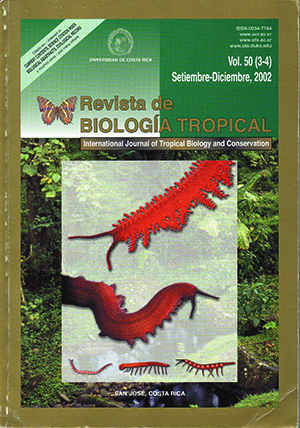Abstract
The West Indian Topshell Cittarium pica is artisanally collected on rocky shores along the Caribbean Coast of Costa Rica. There are neither data on the state of its exploitation nor exist any regulation of the fishery. From October 2000 to March 2001, the population dynamics of this species were studied at an unexploited and two exploited sites to determine the present impact of the fishery on the resource. Average population density with 14 ind./m2 about three times higher at the unexploited than at the exploited sites. Length-frequency histograms showed a strong shift towards smaller specimens at the exploited sites, which is also reflected in significantly higher rates of total mortality (Z = 4.05 and 4.47) when compared to the unexploited site (Z = 1.47). Von Bertalanffy growth parameters were estimated as k = 0.19 - 0.28 (yr-1) and L¥ = 104 mm. No significant differences were found among sites. From these values a range of the growth performance index F was computed (F = 3.31-3.48) which lies at the lower end of the values reported for other tropical marine gastropods. The size at first maturity for both sexes combined was estimated as 29.20 ± 1.14 mm. Exploitation rates >0.6 for both exploited sites and a large fraction of small specimens (<30mm) in the catches suggest overexploitation and recruitment overfishing. Based on the estimated maximum sustainable yield we recommend regulative measures for the fishery such as a control of a minimum landing size of 40 mm and a closure of the fishery during its reproductive period##plugins.facebook.comentarios##

This work is licensed under a Creative Commons Attribution 4.0 International License.
Copyright (c) 2002 Revista de Biología Tropical
Downloads
Download data is not yet available.


